38+ Sample Monthly Meeting Minutes
-
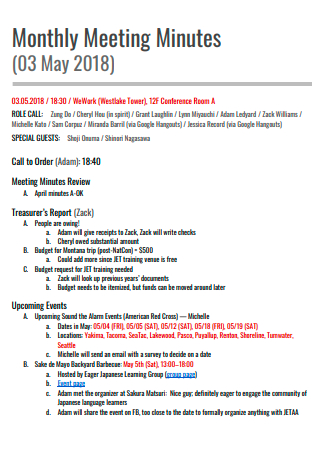
Monthly Meeting Minutes Template
download now -
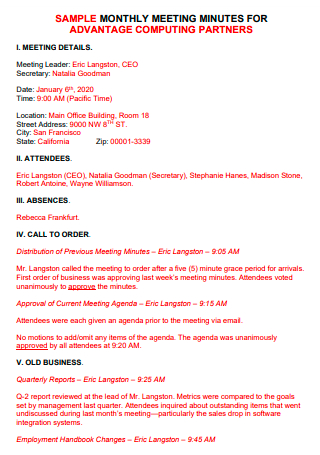
Sample Monthly Meeting Minutes
download now -
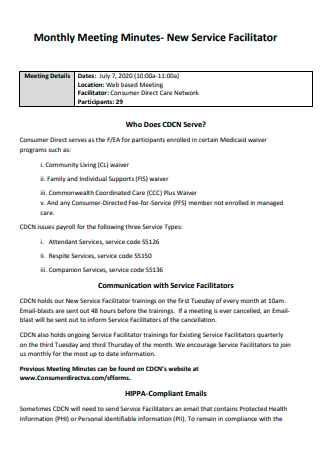
Service Facilitator Monthly Meeting Minutes
download now -
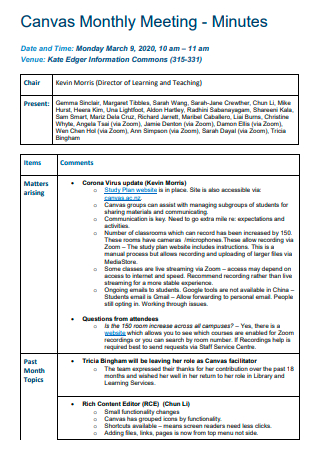
Basic Monthly Meeting Minutes
download now -
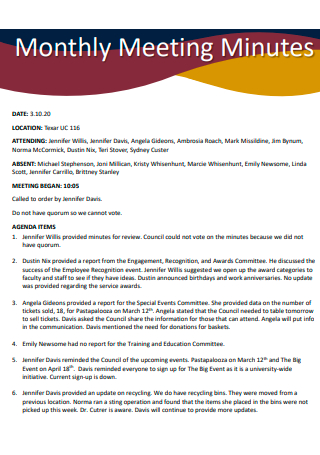
Monthly Meeting Minutes in PDF
download now -
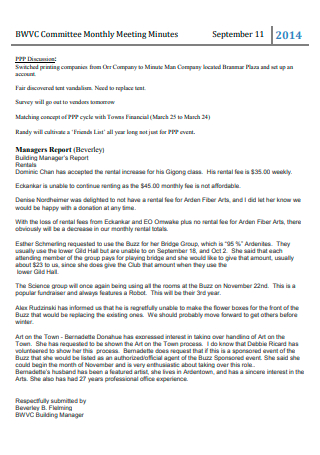
Committee Monthly Meeting Minutes
download now -
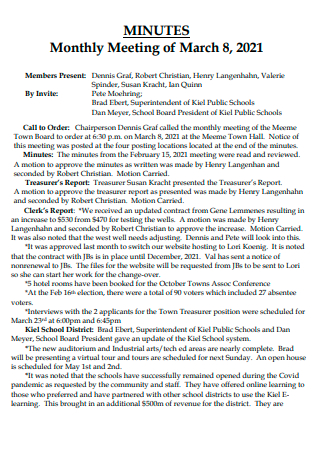
Standard Monthly Meeting Minutes
download now -
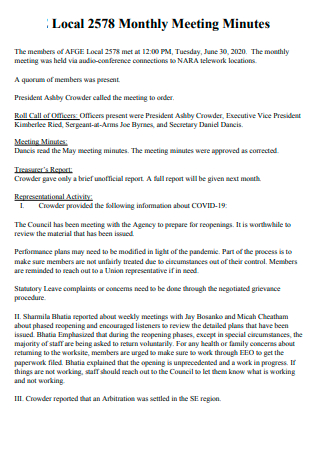
Local Monthly Meeting Minutes
download now -
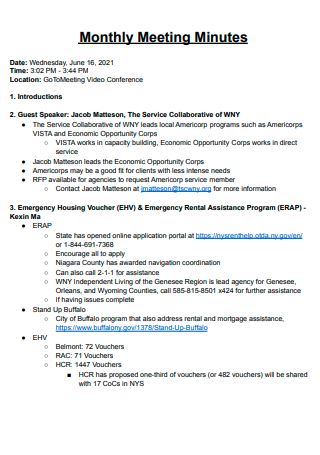
Formal Monthly Meeting Minutes
download now -
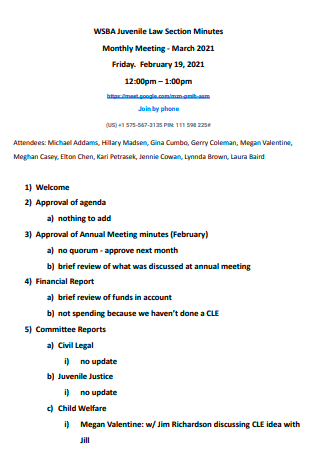
Monthly Meeting Law Section Minutes
download now -
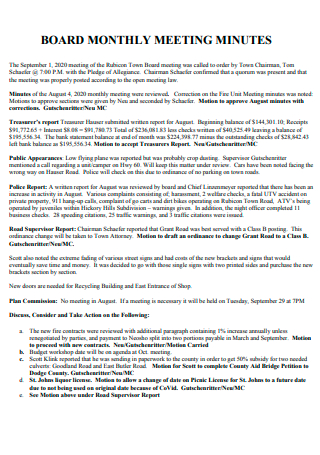
Board Monthly Meeting Minutes
download now -
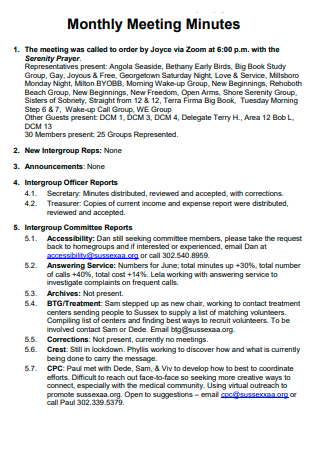
Monthly Meeting Minutes Format
download now -
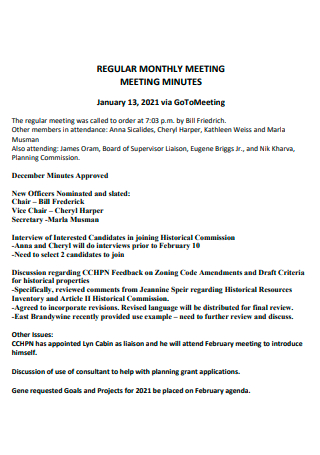
Regular Monthly Meeting Minutes Template
download now -

Draft Monthly Meeting Minutes
download now -
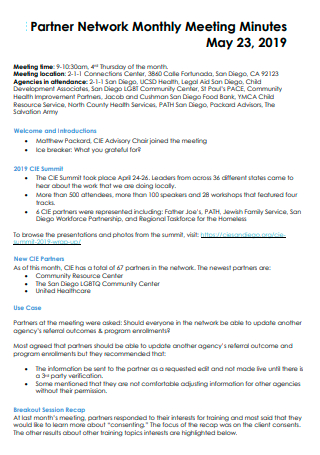
Partner Network Monthly Meeting Minutes
download now -
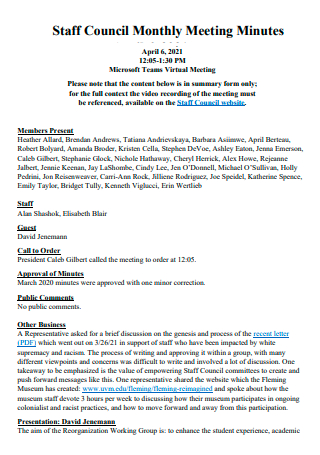
Staff Council Monthly Meeting Minutes
download now -

Simple Monthly Meeting Minutes
download now -
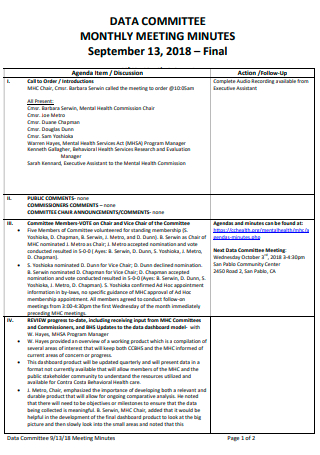
Data Committee Monthly Meeting Minutes
download now -
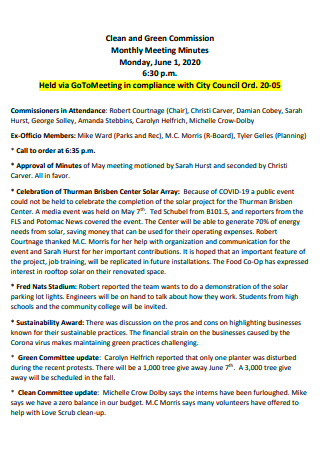
Commission Monthly Meeting Minutes
download now -
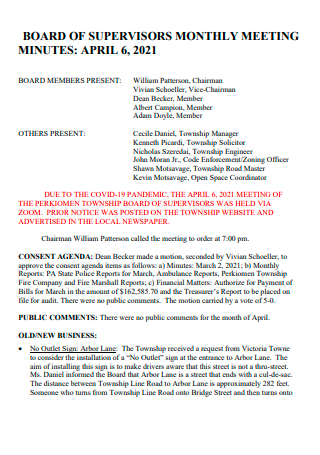
Board of Supervisors Monthly Meeting Minutes
download now -

Homeowners Monthly Meeting Minutes
download now -
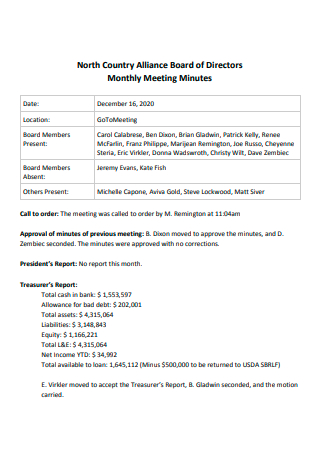
Board of Directors Monthly Meeting Minutes
download now -
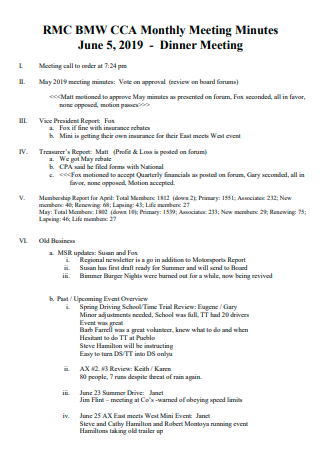
Monthly Dinner Meeting Minutes
download now -
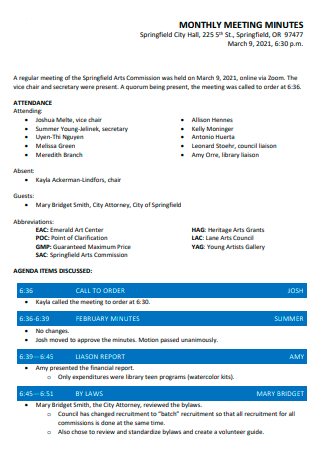
Printable Monthly Meeting Minutes
download now -
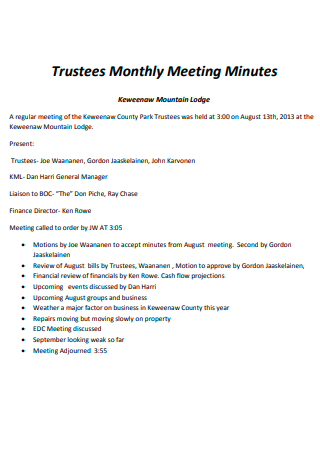
Trustees Monthly Meeting Minutes
download now -
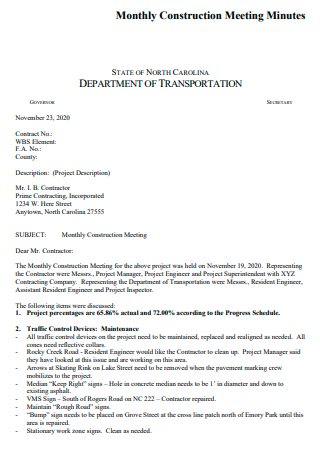
Monthly Construction Meeting Minutes
download now -
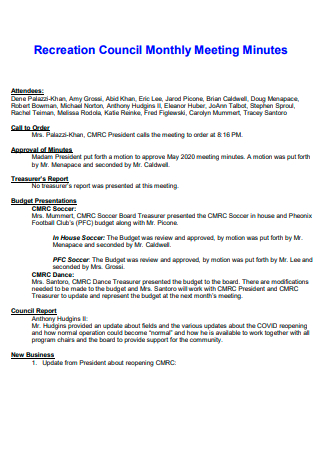
Recreation Council Monthly Meeting Minutes
download now -

Monthly and Preparatory Meeting Minutes
download now -
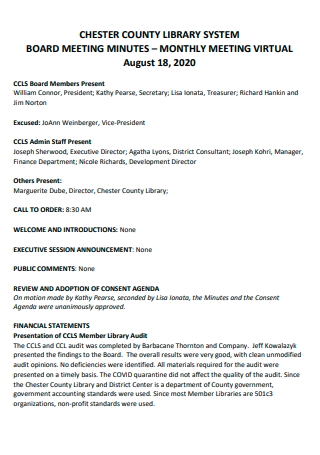
Monthly Meeting Virtual Minutes
download now -
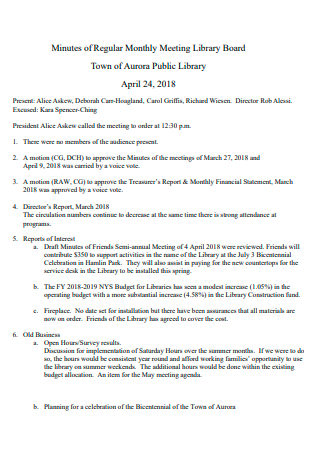
Regular Monthly Meeting Library Board Minutes
download now -
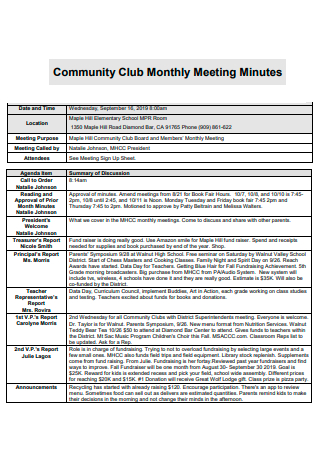
Community Club Monthly Meeting Minutes
download now -

Water Pollution Control Authority Monthly Meeting Minutes
download now -
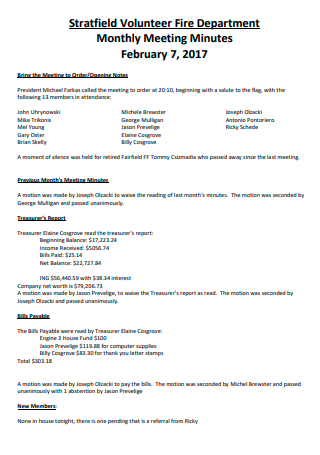
Volunteer Fire Department Monthly Meeting Minutes
download now -
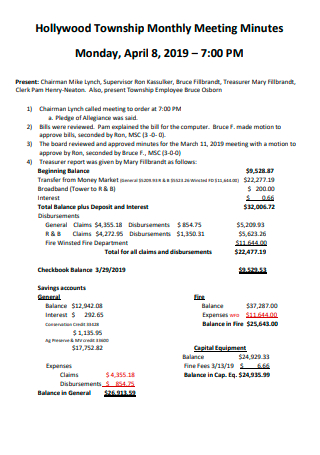
Township Monthly Meeting Minutes
download now -
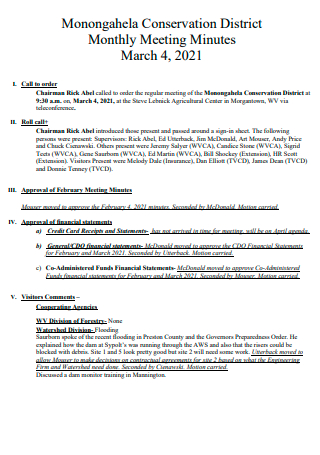
Conservation District Monthly Meeting Minutes
download now -
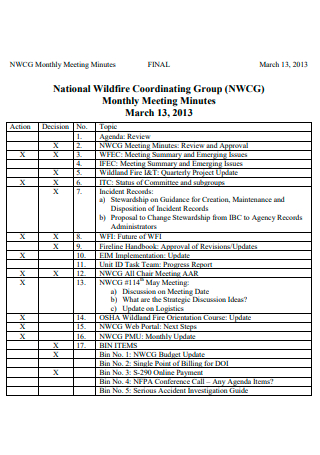
Final Monthly Meeting Minutes
download now -
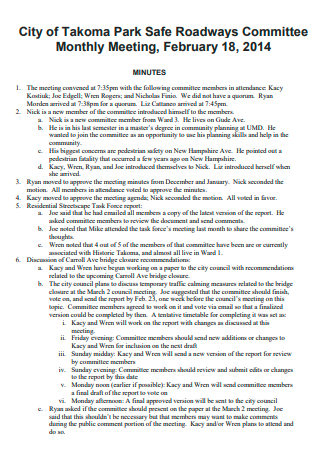
Roadways Committee Monthly Meeting Minutes
download now -
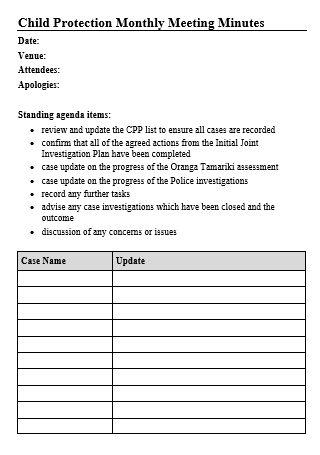
Child Protection Monthly Meeting Minutes
download now -
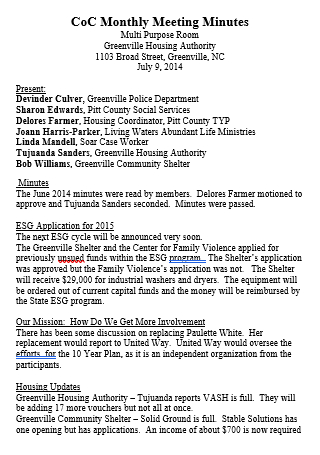
Monthly Meeting Minutes in DOC
download now
FREE Monthly Meeting Minutes s to Download
38+ Sample Monthly Meeting Minutes
What Is a Monthly Meeting Minutes?
What Is the Purpose of Meeting Minutes?
How to Write a Monthly Meeting Minutes
What Not to Include in Meeting Minutes
What to Include in Meeting Minutes
Tips to an Effective Monthly Meeting
FAQs
What type of meeting is a monthly meeting?
In a business meeting, who records the minutes?
How thorough should meeting minutes be?
What Is a Monthly Meeting Minutes?
The major talks, activities, and decisions of a regularly scheduled monthly meeting are recorded in the minutes. The minutes of a meeting are not a comprehensive transcript of the discussion nor a monthly agenda. Meeting Minutes are used to record a summary of the meeting’s important business. Meeting minutes can be used for any type of group inside a corporation, including board meetings. Because this form of meeting notes is primarily for monthly updates and associated reasons, it cannot be used for any type of meeting that requires an official record. Although this written record may still be utilized to educate team members who weren’t able to attend to what transpired, it can also be used to maintain track of choices and action items that can be reviewed. As a result, prior meeting minutes can be utilized to make future corporate decisions.
What Is the Purpose of Meeting Minutes?
They serve as a historical record of the organization’s short and long-term strategy. The meeting minutes can be used as a record for future reference, allowing participants to see what type of progress has been made. Minutes also give the company legal protection. Due diligence is frequently recorded in company meeting minutes, which can then be officiated and documented to prove the organization’s ethical and fair procedures. Meeting Notes can also be used to prove why and how a company made certain choices. This will be useful in answering any queries that may emerge as a result of previous judgments.
How to Write a Monthly Meeting Minutes
Now that the definition and purpose have been clarified, it is finally time to know the steps in writing monthly management meeting minutes. Although the templates and examples have been provided for you, keep in mind that you may need to make adjustments in order for it to fit your company’s needs. Otherwise, the basic format is the same for any meeting minutes. Check on the available monthly meeting minutes sample and choose which one is suitable for your Company.
Step 1: List out the Meeting Details
As the main title, found at the top of the page, should be the label of the document along with your company’s name. This is mainly used for organization purposes and can also act as a label when storing it along with the other documents. Afterward, you must list the chairperson or meeting organizer’s name, as a substitute you can also place the presider of the meeting. Then the secretary’s name or your name if you are the one assigned to take the minutes of the meeting. Then last but not least, the date, time, and location of the meeting.
Step 2: Names of the Attendees and Absentees
The next step is to write down the names of all of the attendees as well as any of those who were unable to attend. Usually, at the start of the meeting, some time is set aside for accepting or amending prior meeting minutes, so you may see who attended the last meeting and create a draft version of an attendee list. Considerably better, utilize the calendar invite to keep track of who is joining or leaving the room.
Step 3: Call to Order
If you are taking formal meeting minutes, it’s vital for attendees to know when the next meeting for this project or subject of discussion will be called to order. This provides you with a rough estimate of how long you have to perform the tasks that have been allocated to you. Knowing when your next project meeting is going to help you manage your time and prioritize all of your responsibilities more effectively. It’s just as crucial to know where your meeting will take place, whether it’s online or in person. It also helps to be aware and gain the approval of the current monthly meeting agenda as well as the previous meeting minutes.
Step 4: Old Business and New Business
Try utilizing your meeting agenda template as a format for your meeting notes, with each agenda item serving as a part for taking notes on, including any results or important choices reached. It’s a good idea to give out your Meeting Agenda ahead of time so that everyone may submit ideas and comments. This also implies that no one enters the meeting without knowing what will be addressed.
Make a list of any unresolved issues from the last meeting. Describe any concerns and resolutions that arose during the old business debate, and keep track of any votes taken. The same is true for new business orders. Describe any concerns, questions, or problems that emerge. Keep track of any reports or other material that is disseminated, as well as any votes that are taken.
Step 5: Track Other Matters
During the course of the meeting, there may be additional announcements or nominations that will take place. Take note of the upcoming scheduled votes and any other business matters that are discussed such as the Monthly Accomplishment Report. The last item to add is any extra papers that you want to send out with your meeting minutes. Consider whether any papers were utilized or referred to during the meeting that you might add for your team members.
Step 6: Wrap up during the Adjournment
As for the last step of the monthly meeting minutes, the meeting will be wrapped up and you have to take note and record the time of the meeting’s end. Afterward tidying up the minutes, bring it over to the meeting organizer and secretary (if you are not under the role) and gain their approval over the details. Lastly, you may distribute the minutes to all the attendees and absentees in order for them to review what was discussed during the meeting.
What Not to Include in Meeting Minutes
Since minutes are public records that members may want to see, be sure to spell out what you don’t want them to see. Direct quotes should be avoided since the speaker can be identified even without a name. Don’t go into detail about what was said at a meeting, particularly who said what. Note simply that “time was allowed for members to debate issues not on the agenda” when subjects not on the agenda are discussed. Minutes aren’t the place for future action items or to-do lists, so keep that in mind.
What to Include in Meeting Minutes
Not a verbatim of everything said minutes are an official record of the actions taken by the board or committee at a meeting. They have a historical function, but they also serve a legal purpose by recording the group’s adherence to appropriate processes and the regulations of the association. And, because minutes and recordings created during a meeting might be used in court, it’s critical to be selective about what you include.
Tips to an Effective Monthly Meeting
Monthly meetings are an essential venue for the company to make critical decisions. Everyone should be aware of its significance, particularly the organizers and participants. To make the meetings as effective and profitable as they should be, both sides must understand and perform their share.
FAQs
What type of meeting is a monthly meeting?
A monthly meeting can be a collection of smaller meetings, sometimes referred to as preparative meetings, that come together for administrative purposes, or it can be a single institution. Multiple monthly meetings in most nations constitute a quarterly Meeting, which then becomes a yearly meeting.
In a business meeting, who records the minutes?
When it comes to writing efficient minutes for a meeting, you will essentially have procedures to follow as a secretary. Before the meeting, you will need to organize ahead of time, take notes during the discussion, and make a formal Report afterward. Meeting minutes are usually transcribed by a secretary or another authorized employee and contain a list of all significant business decisions and resolutions made during the meeting. Check out our available monthly minutes of meeting format.
How thorough should meeting minutes be?
Keep minutes at any meeting when people vote as a general rule. The time, date, and venue of the meeting should all be included in the minutes. The fact that the Meeting Request Email was properly announced in advance or that notification was waived by those in attendance matter.
Meetings are held in a high regard by all the members of the company, as it is the exchange of vital information to not only improve the state of the business but also further their standing in the industry. This is why you need to keep all the important information exchanged within a minutes of monthly meeting. Refer to this article if you need advice on how to write good meeting minutes, and don’t forget to use one of our examples of monthly meeting minutes to ensure consistency and avoid missing any important details.
